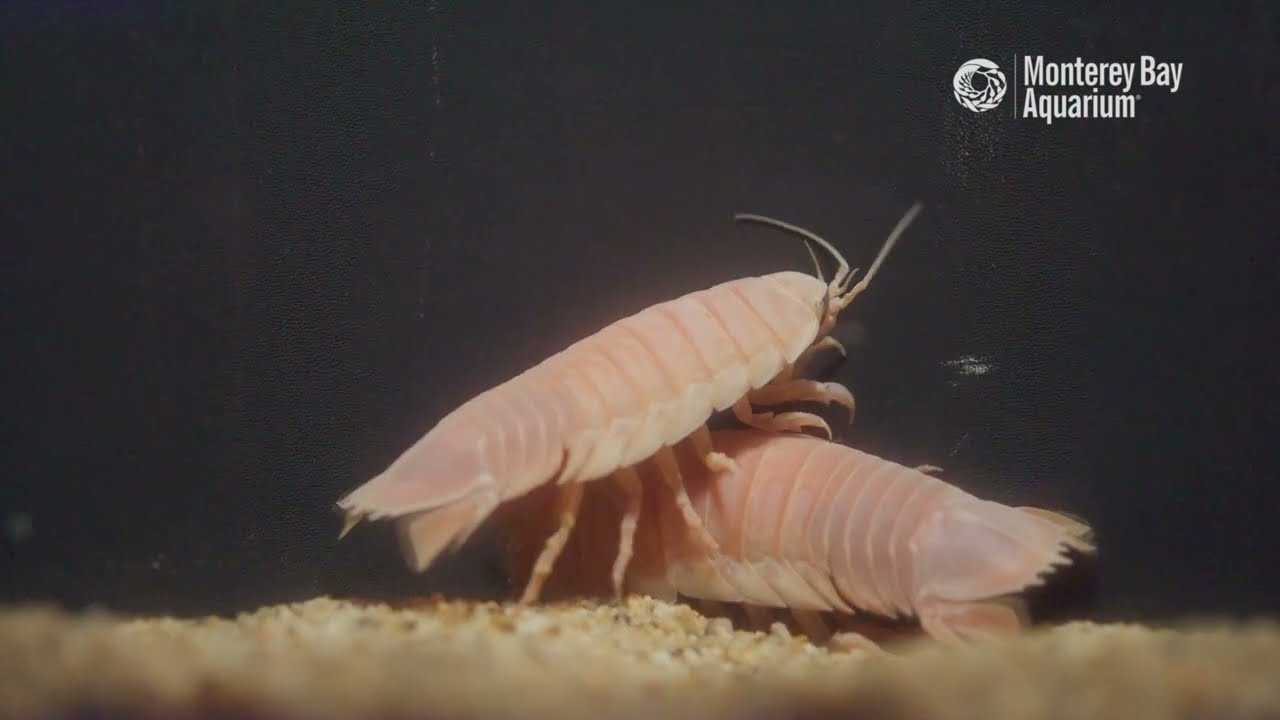– The deep-sea enigma: Delving into the world of Japanese giant isopods, their unique biology, and behaviors.
– How the Japanese giant isopod has adapted to the extreme environment of the deep sea.
– The Japanese giant isopod in culture, scientific research, and what it teaches us about ocean conservation.
– Fascinating facts about the Japanese giant isopod that showcase its role in the ecosystem and its potential impact on future studies.
From the Depths to the Spotlight: The Intriguing Life of the Japanese Giant Isopod
Nestled deep beneath the waves, in the eerie tranquility of the ocean’s abyss, resides a creature as fascinating as it is formidable – the Japanese giant isopod. These are not your garden-variety bugs but remarkable examples of adaptation and survival in Earth’s most secluded habitats.
Born to Thrive in the Abyss
Japanese giant isopods, or Bathynomus giganteus, are like the armored tanks of the crustacean world. These deep-sea dwellers are the goliaths among their kin, related to the little woodlice that might be found curled up under logs. But make no mistake, these isopods are on an entirely different scale, growing up to 14 inches long. Clad in a rigid exoskeleton, replete with jointed plates, they are well-equipped to withstand the crushing pressures of deep-sea life.
So, what’s on the menu for a creature that calls the ocean floor home? Predominantly scavengers, these giants dine on the decaying remains that trickle down from above, a snowfall of organic matter that sustains them in the deep. And when the pickings are slim? They’ve been known to enter a state akin to hibernation, slowing their metabolism to survive lengthy periods without food.
An Evolutionary Marvel
As you marvel at these creatures, you might wonder how they became the titans of their domain. The principle of deep-sea gigantism holds a clue – in the cold, high-pressure, food-scarce abyss, being bigger can mean better energy storage, slower growth, and longer life. This adaptation has allowed giant isopods to thrive where lesser creatures might fail.
Yet there’s more to these isopods than meets the eye. Their compound eyes, resembling a poppy seed cluster, behold glimmers of bioluminescence in the pitch-black depths. But they also boast a more rudimentary set of eyes atop their carapace, sensing the faintest shifts in light to evade predators.
Cultural Celebrities and Conservation Icons
With a face only a marine biologist could love, Japanese giant isopods have wriggled their way into a cultural niche. From starring in memes to inspiring plush toys, they bridge the gap between the alien and the adorable in modern society.
But beyond their meme potential lies a serious emblem of ocean protection. Studying these creatures can shed light on the health of our oceans and the impact of deep-sea trawling and pollution. As extremophiles, giant isopods could even unlock survival secrets in harsh conditions, with potential applications ranging from medicine to space travel.
The Quiet Custodians of the Deep
As scavengers, Japanese giant isopods play a crucial role in their ecosystem, recycling nutrients and helping to cleanse their environments. Their life cycle and reproductive habits also intrigue them. Mating rituals and brooding behaviors remain a mystery, with females guarding their eggs for months in a specialized pouch. Such dedication ensures the next generation of isopods persists amid the oceanic abyss.
Yet life in the deep is not without risks. Climate change and its resultant ocean acidification threaten these hardy creatures, as do microplastics and other pollutants that find their way to the ocean floor. Protecting the isopods’ habitat is thus not only about conserving a species but also safeguarding the intricate web of life in our planet’s most uncharted territories.
The Allure of the Alien
With their alien-like appearance, Japanese giant isopods ignite our curiosity and stretch our imagination. They remind us of the continuous spectrum of life on Earth, of beings that challenge our concept of normalcy and beauty. Their very existence is a testament to life’s tenacity and diversity, a reminder that life not only endures but flourishes in the dark and remote corners of our world.
So, let’s toast to the health of the Japanese giant isopods, the armored titans of the deep. They persist, prevail, and captivate in their dark, cold realm. As we peer into their world, we see not the ocean’s limit but its beginning – a starting point for the exploration that leads to wonder after wonder, uncovering the incredible story that unfolds beneath the waves.
*****
Source Description
Isopods: 👉👈🥺
Us: 😍
Isopods: 🥰
Crawling through the day with a seaside of swagger.
Want to learn more about our deep sea animals? Watch our video about recreating the deep: https://youtu.be/w-nGD_8iP6I?si=wFpEQbCArLAeNshL
____
Whale, hello there! We hope you liked this video. Subscribe to our channel for more from the Monterey Bay and our mission to inspire the conservation of the ocean:
https://www.youtube.com/subscription_center?add_user=montereybayaquarium
We’re on Facebook: https://www.facebook.com/montereybayaquarium
And Instagram! https://www.instagram.com/montereybayaquarium
And Tumblr! https://www.tumblr.com/blog/montereybayaquarium
And Twitch! https://www.twitch.tv/montereyaq
And TikTok! https://www.tiktok.com/@montereyaq
And Discord! https://discord.gg/montereybayaquarium
And subscribe to our emails here: https://montereybayaquarium.org/subscribe


